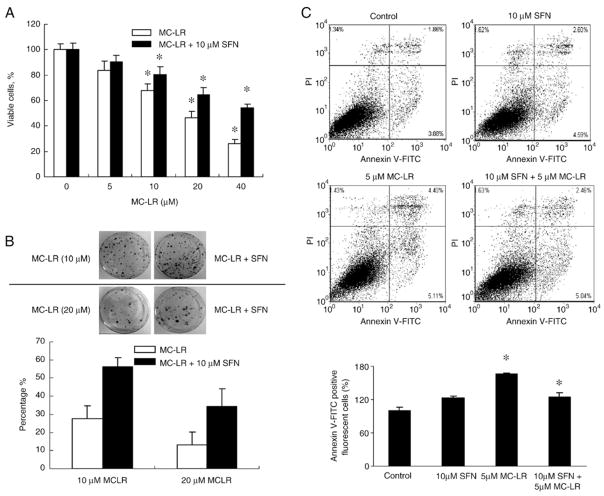Fig. 4.
SFN induces antioxidative protection in NIH 3 T3 cells. (A) SFN pretreatment improves cell viability suppressed by MC-LR. Cell survivals in NIH 3 T3 cells with or without pretreatment with 10 μM SFN for 24 h and then treated with MC-LR for another 24 h were measured by the MTS assay. (mean±S.D. of three experiments; *, p<0.05). (B) Colony formation assay confirms cytoprotection by SFN. Top, colony formation images in NIH 3 T3 clones after 3 weeks. Cells were pretreated with or without 10 μM SFN for 12 h and then treated with MC-LR for another 24 h, as indicated in materials and methods. Bottom, percentage of viable NIH 3 T3 cells after 3 weeks with MC-LR treatment for 24 h in the presence or absence of SFN. Error bars indicate the S.D. (n=3). (C) SFN pretreatment inhibits MC-LR-induced apoptotic cell death. Cell death in NIH 3 T3 cells with or without pretreatment with 10 μM SFN for 12 h and then treated with MC-LR for another 24 h. Cell death was detected using Annexin V-FITC staining and flow cytometry. The bar graph was the proportion of early apoptotic cells plus late apoptotic cells comparing with control; the mean±SD was calculated from experiments run in triplicate (bottom).

